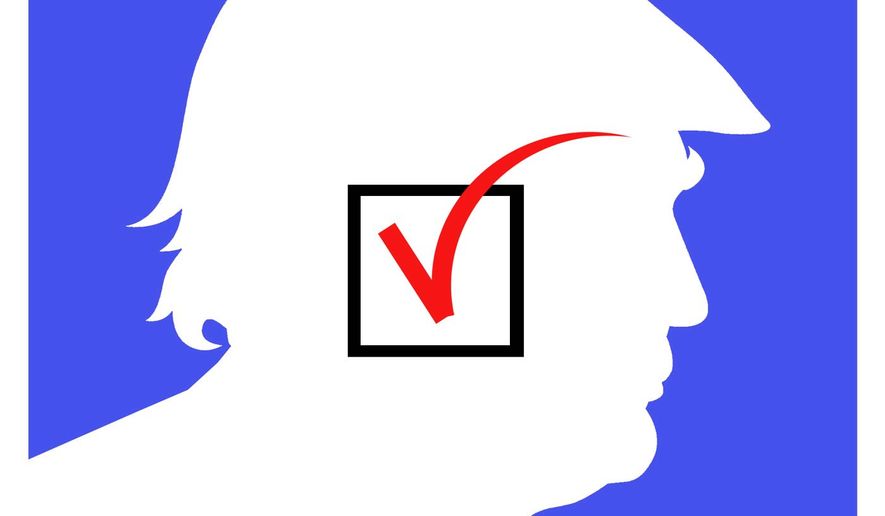OPINION:
President Trump and congressional Democrats are sending similar messages about the economy.
The president is implementing radical policies: tall tariffs that disrupt supply chains, tougher legal immigration policies, strong-arm deportations, and pairing COVID-era enhancements to Affordable Care Act subsidies and Medicaid.
These squeeze working- and middle-class Americans by boosting inflation and slowing job growth.
It’s the basics.
Food prices are soaring again (try buying beef), and essential services — everything from fixing cars to Microsoft Office for home computers — are getting more expensive quickly.
The real sticker shock will arrive with the Affordable Care Act 2026 insurance premiums. Those could double with the phasedown of subsidies.
Fewer foreign workers should mean less competition and better wages for key constituencies: young people and lower-income workers, who helped put Mr. Trump back in the White House. The labor market tsunami, artificial intelligence agents, is eating jobs like Leiningen’s ants.
The harsher reality is that all those factory jobs Mr. Trump’s tariffs were supposed to create aren’t appearing. Manufacturing employment continues to fall.
Economic policy is tough to make when data on jobs, prices and growth are delayed. The Federal Reserve faces that challenge during the government shutdown.
Over the four months ending in August, the economy added only 27,000 jobs per month, well below the torrid 174,000 during the final 15 months of the Biden presidency.
With the Bureau of Labor Statistics closed, economists sifted data from private sources, such as payroll company ADP and Revelio, which compiles data from employment networking sites.
Those indicate that 32,000 jobs were added in September.
Wage growth has slowed, and the bigger pay bump workers can accomplish by switching jobs is rapidly disappearing.
The president’s supporters can point to the AI-driven productivity surge that is boosting economic growth, but if your pay is hardly keeping up with inflation, you are likely upset.
If you can’t find work in a stagnant job market, then you’re downright angry.
In September, an AP-NORC survey indicated that only 37% of voters approved of Mr. Trump’s handling of the economy, while 62% disapproved.
The trends are particularly disquieting among young voters who helped Mr. Trump regain the presidency.
The number of 16- to 24-year-olds who are NEET — not employed, enrolled in school or in some kind of training, such as an apprenticeship program — has been rising steadily from 6.6% in mid-2023 to 10.5%.
The Trump tariffs are premised on the notion that large numbers of manufacturing jobs abroad are stolen from Americans by unfair trade.
That falls short in several dimensions.
As the U.S. Immigration and Customs Enforcement raid at a Georgia Hyundai complex laid bare, we can’t build the factories without immigrant labor. We don’t have enough Americans with the requisite skills.
The prospective job numbers at new factories are not huge when set against the nearly 14 million who are unemployed, in forced part-time status or too discouraged to look actively these days.
In Asia, the most populous and arguably vibrant countries, China, India and Indonesia, have youth unemployment rates of 16.5%, 17.6% and 17.3%, respectively.
If they are eating our lunch, it’s a thin bologna sandwich.
The president’s advisers are telling him to focus Americans’ attention on next year, when his tax cuts will more fully kick in and the benefits of deregulation and lower oil prices will gain more traction.
The economy is already growing, and there isn’t much room for additional inflation-free fiscal stimulus. The budget deficit already exceeds 6% of gross domestic product.
The Fed will likely lower interest rates, but zoning and land use laws still limit homebuilding around major employment hubs.
It will continue to be a tale of two economies: AI’s winners and the rest of us.
Strong private investment boosted second-quarter GDP growth to 3.8%, and information processing equipment, software and R&D were 72% of that.
That’s likely to continue with the bold projects Sam Altman’s ChatGPT and competitors such as Meta and Elon Musk are financing with revenue, debt and booming stock prices.
Optimism is driving up technology stocks and creating stunning asset values. ChatGPT is now worth about as much as Exxon Mobil.
That permits AI impresarios to sell shares and borrow from new investors, but it hinges on AI delivering new agents to sell to businesses and perhaps attaining artificial general intelligence.
The boom becomes a bubble if the pace of new applications disappoints or if those don’t generate enough revenue, because low-tech companies such as Walmart learn how to create their own agents to bypass Silicon Valley.
In the meantime, the growth is narrowly focused on who gets the jobs, raises and prosperity.
Democrats, by shutting down the government by demanding ransom to pass a budget, basically send the same message: Pause spending cuts for health care and other social programs and let the voters judge the economy in the 2026 midterm elections.
• Peter Morici is an economist and emeritus business professor at the University of Maryland and a national columnist.




Please read our comment policy before commenting.